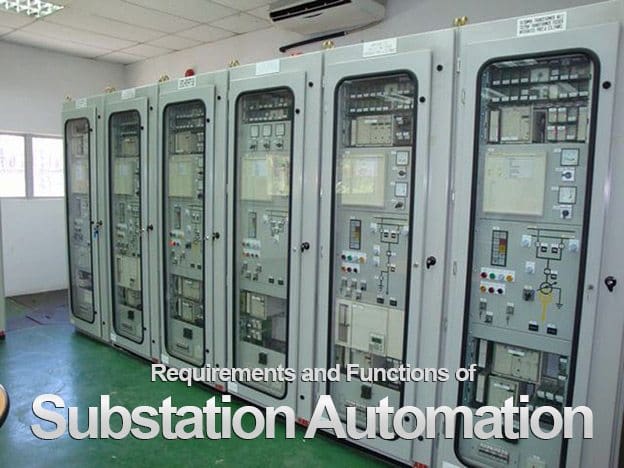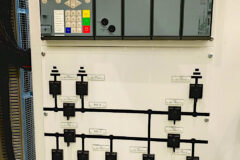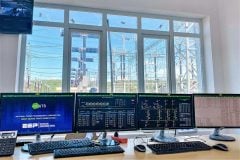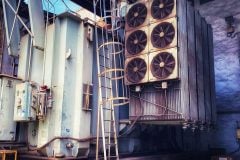Introduction
Substation automation is the cutting edge technology in electrical engineering. It means having an intelligent, interactive power distribution network including :
- Increased performance and reliability of electrical protection.
- Advanced disturbance and event recording capabilities, aiding in detailed electrical fault analysis.
- Display of real time substation information in a control center.
- Remote switching and advanced supervisory control.
- Increased integrity and safety of the electrical power network including advanced interlocking functions.
- Advanced automation functions like intelligent load-shedding.

Requirements
The general requirements for selecting an automation system while designing a new substation are:
- The system should be adaptable to any vendor’s hardware.
- It should incorporate distributed architecture to minimize wiring.
- It should be flexible and easily set up by the user.
- The substation unit should include a computer to store data and pre-process information.
Functioning
Bus voltages and frequencies, line loading, transformer loading, power factor, real and reactive power flow, temperature, etc. are the basic variables related with substation control and instrumentation. The various supervision, control and protection functions are performed in the substation control room.
The relays, protection and control panels are installed in the controlled room. These panels along with PC aids in automatic operation of various circuit breakers, tap changers, autoreclosers, sectionalizing switches and other devices during faults and abnormal conditions.
- Normal routine operation by operator’s command with the aid of analog and digital control system.
- Automatic operation by action of protective relays , control systems and PC.
The automated substation functioning can be treated as integration of two subsystems, as discussed below :
(a) Control System
The task of control system in a substation includes data collection, scanning, event reporting and recording; voltage control, power control, frequency control, other automatic and semiautomatic controls etc.
The various switching actions like auto reclosing of line circuit breakers, operation of sectionalizing switches, on-load tap changers are performed by remote command from control room. The other sequential operations like load transfer from one bus to another, load shedding etc. are also taken care by control center.
(b) Protective System
The task of protective system includes sensing abnormal condition, annunciation of abnormal condition, alarm, automatic tripping, back-up protection, protective signaling.
The above two systems work in close co-operation with each other. Most of the above functions i.e. automatic switching sequences, sequential event recording, compiling of energy and other reports, etc. are integrated in software in the substation computer. This software is of modular design, which facilitates addition of new functions.
The communication between circuit breakers, autoreclosers and sectionalizing switches in the primary and secondary distribution circuits located in the field and the PC in distribution substation control room is through radio telecontrol or fibre optic channel or power line carrier channel as is feasible.
Reference: Chapter 42, Distribution Automation // Unknown











Thanks a lot for a very useful preliminary information on the subject.
Thanks for these useful Informations
Hello sir, …
I found this article very useful as i’m currently working in a project to rebuild the Electrical Control System (ECS) in an Oil refinery. I have a doubt regarding this topic, and i want you to clarify that , please
Here the ECS consists of 3 Major parts.. They are,
1.Electrical Distribution Management System (EDMS)
2.Load Management System (LMS)
3.Communication Processors (CP)
The inputs to all the three systems are from the different substations located in different areas, and they are ,as you said, usually bus and line voltage, frequencies, loading of generator, transformer, Active and reactive power flow measurements etc.
My question is, as the inputs to all these systems are same, and after all the final output from all these systems are same ( I mean, the final operation would be a closing/opening of breaker or something, right ?) why should we need Three whole dedicated systems to act, Because this increses the complexity and cost of the entire system.. Still why would we adopt that kind of a structure ?
Does reliability come into pictur here? because i didnt think so…!